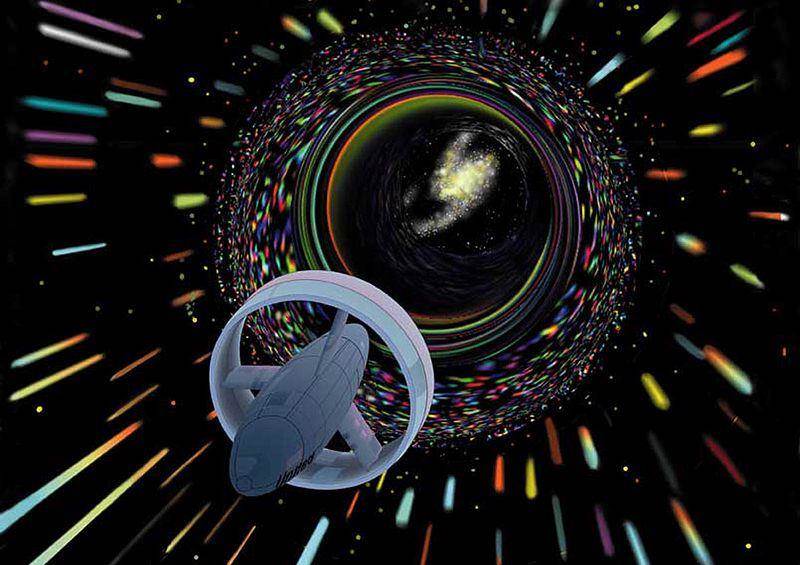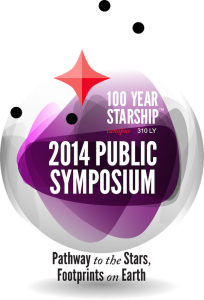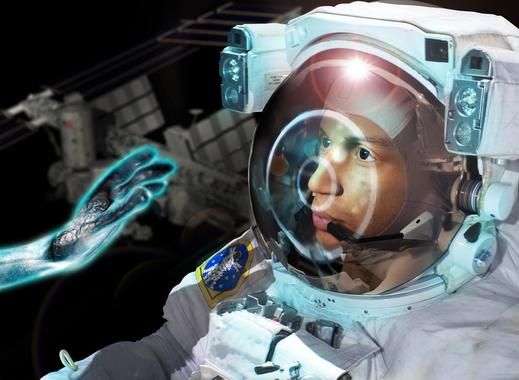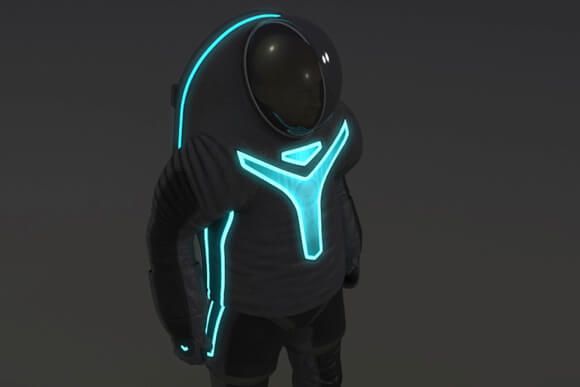100 Year Starship announces a Call for Papers for the 100YSS 2014 Public Symposium. The Symposium will be held September 18–21 at the George R. Brown Convention Center in Houston, Texas, United States.
You’re invited to submit your abstract for one of the eight Technical Tracks or Poster Session and be a part of our transdisciplinary scope to include the broadest swath of ideas and people for our mission. Abstract deadline is 20 June, 2014.
The Pathway to the Stars, Footprints on Earth theme still guides the focus of 100YSS’s Public Symposium. It compels us to continue our journey and maintain our mission. Last year, our participants explored different avenues of fundamental research, technology development, societal systems, and capacities that facilitate ready access to our inner solar system. This year we move that focus forward with more in-depth access to emerging and cutting edge topics – expanding our view of design, creating new pathways in education, discovering psychology, and cutting edge transportation methods. Using a collaborative and Transdisciplinary approach to capability and capacity building, our mission will continue to support our efforts to enhance life here on earth…today. Join us as we log another year in our 100-year mission at the 100YSS 2014 Public Symposium.
Below are the tracks for our 2014 Call For Papers.
Propulsion and Energy
How fast and how far can we travel? Fundamental breakthroughs in propulsion and energy are required for interstellar travel to be feasible. To overcome the formidable time-distance barrier for travel between stars, robust leaps in theory and engineering for energy production, control and storage must occur, as well as the advancement and demonstration of propulsion techniques.
Data, Communications and Information Technology
Sending and receiving information by interstellar travelers or robotic vehicles requires development new methods to traverse the vast emptiness between stars. Additionally, in the absence of routine and timely communication with Earth, a probe or traveler must be self-sufficient in gathering, generating, compiling, storing, analyzing and retrieving data while ensuring these systems are operational over the lifetime of the mission and beyond.
Designing for Interstellar
Design for interstellar probes and crewed vehicles must address the unique characteristics and extreme environment of interstellar space. The equipment, structures, tools, materials, buildings, furniture, cleaning and maintenance processes, clothing—the accouterments of life and work— surround and create an environment. This environment protects, nourishes and facilitates daily activities. For most living things, their environment must fulfill many physical needs and for higher order creatures, physical, mental and emotional requirements need be met as well. Understanding, optimizing and manufacturing design to make these aspects of daily activities sustainable are critical for any hope of successful interstellar flight—with a living crew or robotic probes.
“Uncharted” Space and Destinations
Understanding the interstellar medium and the composition of exosolar systems is vital as we contemplate travel to the stars. In addition, as our gaze is drawn many light years away, focusing on closer objectives as stepping stones to deep space will be essential. Beyond Mars, what missions should be designed to eventuate successful travel to another star? How should potential destinations be evaluated? What do we know and how do we learn more about space between the stars?
Interstellar Education
The journey beyond our solar system will overwhelm current educational practices. Commonly held beliefs and understandings of “learning” must and will be challenged. It is probable that humans have huge untapped capacities. Innovative learning tools and educational structures are needed for syntheses of ever-increasing information. The interstellar education platform will drive new knowledge of the universe and the development of the workforce that can create all that will be needed for interstellar travel. What are these new educational paradigms? What is education’s role—formal and informal—in producing interstellar citizens?
Life Sciences in Space Exploration
As ”Earth-evolved” humans, plants and other life forms travel deeper in space, we must understand much more about the fundamentals of life mechanisms. We must prepare for radical shifts in nutrition, potential therapeutics, growth and development, physiology and ethics. Concurrently, as we search for life beyond the earth we may need to re-evaluate our perspective of what is defined as “life”. Also, how might we use the interstellar environment itself for life science research?
Becoming an Interstellar Civilization
Are humans driven to search beyond our knowledge base? How and in response to what do we create the belief systems that guide us? Interstellar travel is not just about the physical trip, but must include the journey civilizations take together. Who will we be and what will define our societies, morality, ethics, cultures, laws, economies, relationships and identities?
Interstellar Innovations Enhancing Life on Earth
Technology progresses in small increments and by leaps and bounds. Often the biggest steps forward are through the invention and innovation required to meet grand challenges. Interstellar travel represents such a challenge that may spur new economies, combat climate change, address heretofore incurable diseases. This session asks “What are these innovations and how can we deploy these to enhance life here on Earth?”
Poster Sessions
Great ideas arise through unique individual observations, from people of all ages and educational backgrounds. The Poster Sessions are an opportunity to present snapshots of these early concepts and experiments. Poster sessions are a great forum to communicate any commercial opportunities in space or here on earth and seek like-minded collaborators or investors. Presentation in the poster format allows in-depth discussion in a small group setting. Topics are open.
SUBMISSION GUIDELINES
Submissions can be perspectives on the central dogma, experimental results, and review of a specific topic. You must ensure that it fits the track topic to which you are submitting. Individual presentations will only be presented in one track. Individuals do not have to be associated with an institution to submit an abstract. Please note that materials should be non-commercial in content, any commercial presentation that communicates a service, technology or product can be submitted to our poster session.
Submissions will be reviewed based on bona fide field of inquiry/thought/research that derive from validated in patents, literature, mathematics or practice. The data submitted should represent one or more of the following:
- Actual data or background search generated presents a challenge to current dogma or asks a significant question
- Data moves the field forward or clarifies some aspect of the field
- Solves a problem acknowledged in the field
- Provides a novel, well supported integration and/or review of field and proposes specific concept
Submitted abstracts are well written, 300 word, concise and includes a statement of the following items. If actual data, results and conclusions are not available, please provide a well though out plan for how the information will be generated.
- Background
- Problem and hypothesis
- Experimental design (or literature review)
- Data
- Results
- Conclusions and Discussion
For Social Science submissions, (e.g. Interstellar Education and Becoming an Interstellar Civilization Tracks), the following guidelines apply for the abstract, presentation and paper submissions. The submissions should:
- Articulate the issue or research question to be discussed,
- Indicate the methodological or critical framework used, and
- Indicate the findings or conclusions to be presented and/or the relevance to wider conference themes.
Presentations and papers can present any kind of research or analysis, but it should be written so that the importance of the work can be understood by reviewers working in different disciplines or using different approaches. Cross- or trans-discipline work is especially encouraged.
100YSS Poster Submissions
In order to provide a broader audience the opportunity to present their ideas, there will be on option to present a poster for your submission. All authors are welcome to present in the Poster session. Individuals can submit for poster session only. A Track Chair may also select submissions for a poster presentation. Individuals or companies advertising a service, technology or product can submit for poster only presentations. If you are a commercial entity, the poster session may be the perfect opportunity to present you idea. Each poster must fit into the 100YSS mission and provide a valid line of inquiry. The final submission should be 4ft x 4ft or 122 cm x 122 cm.
2014 Call for Papers Timeline
- Call for papers opens: 11 April
- Abstracts due: 20 June
- Notification of acceptance: 15 July
- If accepted, Presentations and Posters Due: 10 September
The 100YSS Style Guide for Papers will be provided to presenters on acceptance of abstract.
To submit your abstract, visit: http://100yss.org/symposium/2014/
Please note that you will be asked to create an account to submit your abstract. Registration for the symposium itself is coming soon.





